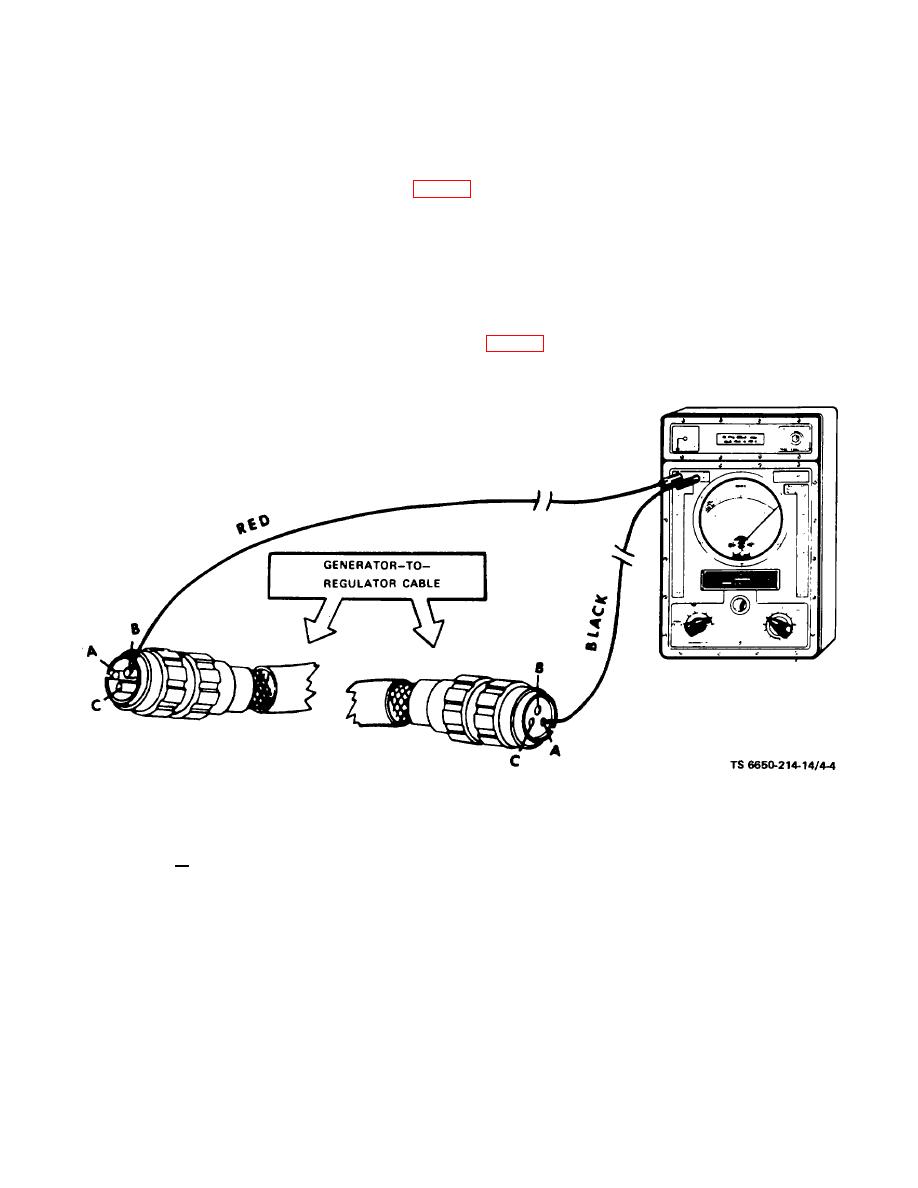 |
|||
|
|
|||
|
Page Title:
Figure 4-4. Testing for Shorts. |
|
||
| ||||||||||
|
|
 TM 5-6640-214-14
(3) Testing for Shorts. A short (or short circuit) occurs when two circuits that should not be connected have
metal-to-metal contact with each other. A short also occurs when a circuit that should not touch ground has metal-to-
metal contact with ground. To check for shorts, do the following steps:
(a) Set up and "zero" the multimeter (fig. 4-2).
CAUTION
Failure to do the following steps can damage the multimeter.
(b) Disconnect the circuit being tested.
(c) With all three multimeters, connect one probe to one circuit and the other probe to the other circuit or
ground (if checking for a short to ground). The example below (fig. 4-4) shows a check to see if wire "A" is shorted to
wire "B" in the wiring harness.
Figure 4-4. Testing for Shorts.
(d) Look at the needle.
1. If the needle swings to the far right over the "zero" on the top scale (on all three multimeters), the
circuits are shorted.
4-7
|
|
Privacy Statement - Press Release - Copyright Information. - Contact Us |